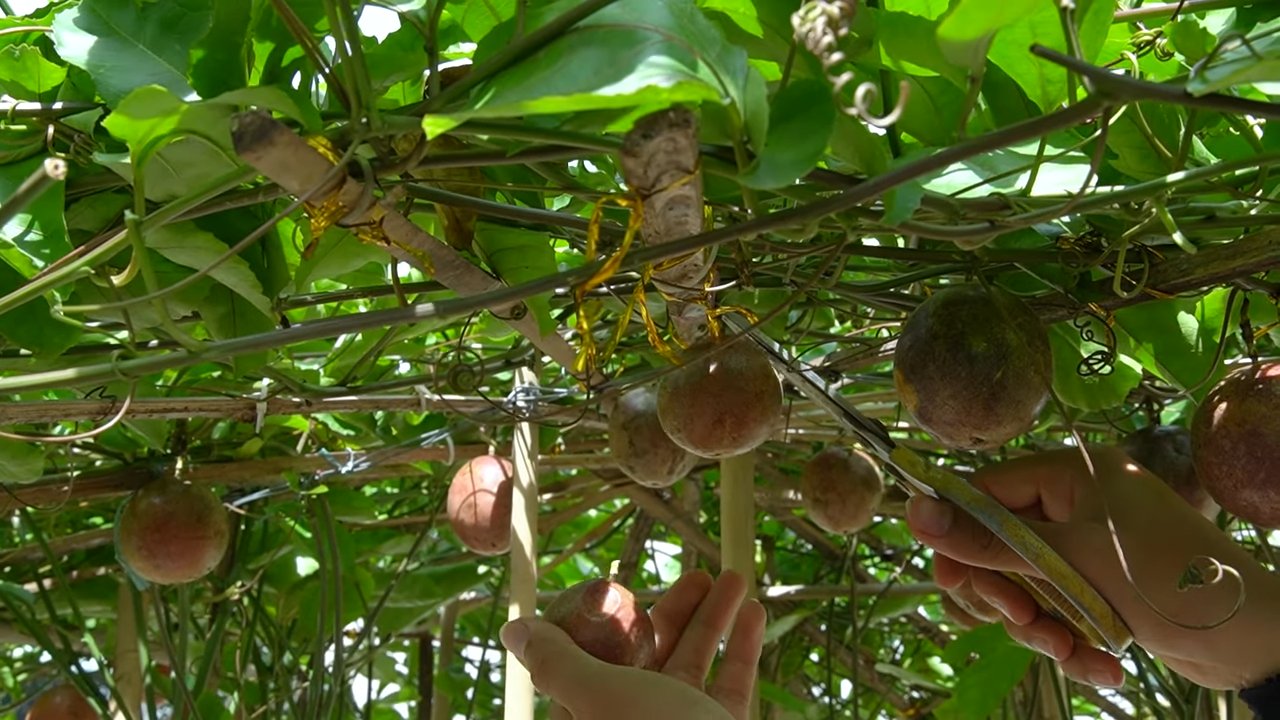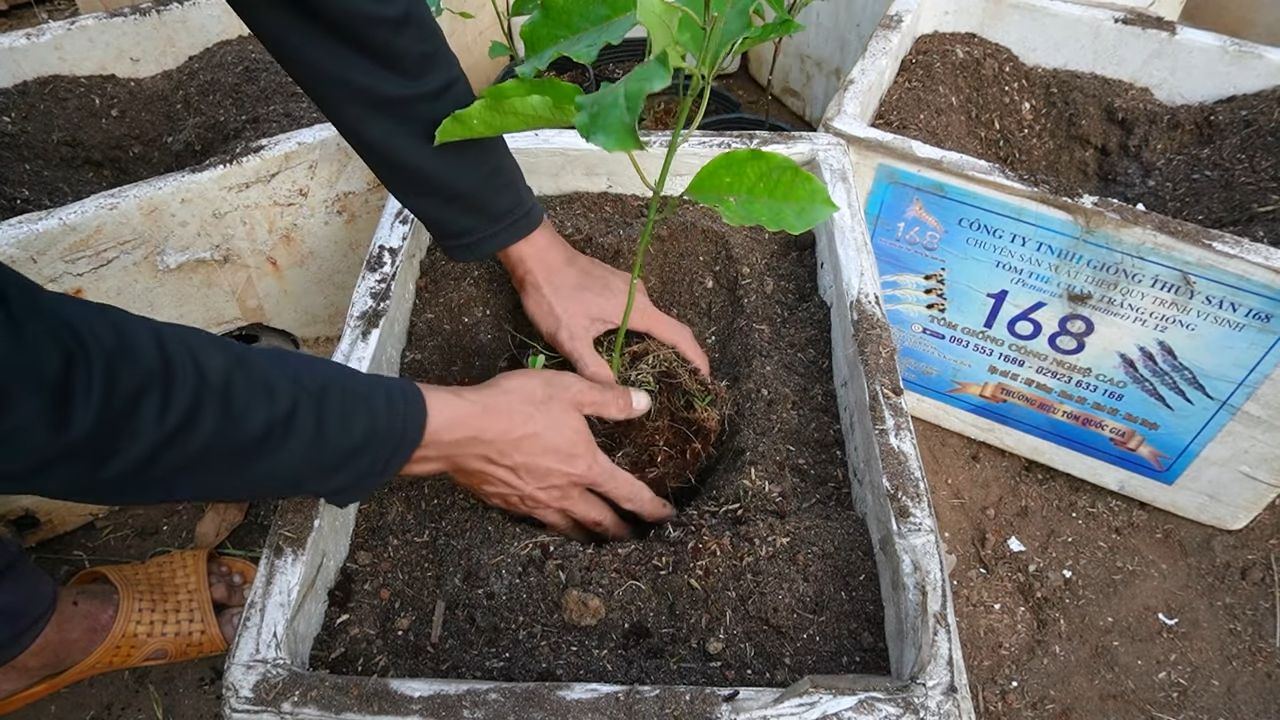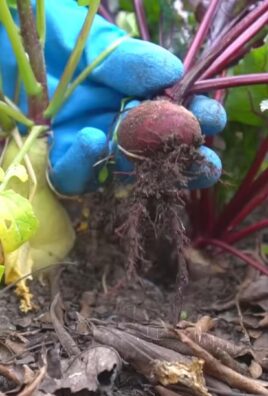Growing passion fruit at home might seem like an exotic dream reserved for tropical climates, but I’m here to tell you it’s more achievable than you think! Forget those expensive supermarket prices and imagine plucking your own sweet, tangy passion fruit straight from your backyard.
For centuries, passion fruit has been cherished in South America, not just for its delicious flavor but also for its purported medicinal properties. Indigenous cultures have long used its leaves and flowers in traditional remedies. Now, you can bring a piece of that rich history and vibrant flavor to your own home.
Why should you embark on this DIY adventure? Well, besides the obvious benefit of fresh, organic fruit, growing passion fruit at home is incredibly rewarding. It’s a fantastic way to connect with nature, learn about plant life cycles, and impress your friends and family with your green thumb. Plus, who wouldn’t want a beautiful, fragrant vine adorning their garden or balcony? This article will guide you through simple, effective tricks and hacks to successfully cultivate your own passion fruit vine, even if you’re a complete beginner. Let’s get started and transform your space into a tropical paradise!

DIY: Passionsfrucht zu Hause anbauen – So klappt’s!
Ich liebe Passionsfrüchte! Ihr süß-säuerlicher Geschmack ist einfach unschlagbar. Und was noch besser ist: Man kann sie auch zu Hause anbauen! Es mag anfangs etwas einschüchternd wirken, aber mit der richtigen Anleitung und etwas Geduld ist es wirklich machbar. Ich zeige dir, wie du deine eigene Passionsfrucht-Oase erschaffen kannst.
Was du brauchst:
* Passionsfruchtsamen oder eine Jungpflanze: Samen sind günstiger, aber Jungpflanzen sparen Zeit. Ich empfehle, mit einer Jungpflanze zu beginnen, wenn du ungeduldig bist.
* Einen Topf (mindestens 30 cm Durchmesser) oder einen geeigneten Platz im Garten: Passionsfrüchte brauchen Platz zum Wachsen.
* Hochwertige Blumenerde: Gut durchlässig und nährstoffreich ist wichtig.
* Rankhilfe: Ein Spalier, Zaun oder ähnliches, an dem die Pflanze hochklettern kann.
* Gießkanne oder Schlauch: Zum regelmäßigen Gießen.
* Dünger: Spezieller Dünger für Obstpflanzen oder ein ausgewogener Mehrnährstoffdünger.
* Gartenschere: Zum Beschneiden der Pflanze.
* Geduld: Passionsfrüchte brauchen Zeit, um zu wachsen und Früchte zu tragen.
Die richtige Sorte wählen:
Es gibt verschiedene Passionsfruchtsorten, die sich in Geschmack, Größe und Klimaansprüchen unterscheiden. Informiere dich, welche Sorte in deiner Region am besten gedeiht. Die “Purple Passion Fruit” (Passiflora edulis) ist eine beliebte Wahl für den Anbau im Topf.
Passionsfrucht aus Samen ziehen:
Wenn du dich für den Anbau aus Samen entscheidest, beachte folgende Schritte:
1. Samen vorbereiten: Die Samen der Passionsfrucht haben eine harte Schale. Um die Keimung zu beschleunigen, kannst du sie vor dem Aussäen für 24 Stunden in warmem Wasser einweichen. Manche schwören auch darauf, die Samen leicht anzurauen, z.B. mit Schleifpapier. Aber Vorsicht, nicht zu stark beschädigen!
2. Aussaat: Fülle einen kleinen Topf oder eine Anzuchtschale mit Anzuchterde. Verteile die Samen gleichmäßig auf der Erde und bedecke sie leicht mit Erde (ca. 0,5 cm).
3. Feuchtigkeit: Befeuchte die Erde vorsichtig mit einer Sprühflasche. Die Erde sollte feucht, aber nicht nass sein.
4. Wärme und Licht: Stelle den Topf an einen warmen und hellen Ort. Eine Temperatur von 20-25°C ist ideal. Ein Mini-Gewächshaus oder eine durchsichtige Plastikfolie über dem Topf kann helfen, die Luftfeuchtigkeit zu erhöhen.
5. Geduld: Die Keimung kann einige Wochen dauern. Halte die Erde feucht und warte geduldig.
6. Pikieren: Sobald die Sämlinge einige Blätter entwickelt haben, kannst du sie in größere Töpfe umpflanzen.
Passionsfrucht pflanzen (Jungpflanze):
Wenn du eine Jungpflanze gekauft hast, ist das Pflanzen einfacher:
1. Topf vorbereiten: Wähle einen Topf mit ausreichend Drainage-Löchern. Fülle den Topf mit hochwertiger Blumenerde.
2. Pflanze einsetzen: Nimm die Jungpflanze vorsichtig aus dem Anzuchttopf und setze sie in den vorbereiteten Topf. Achte darauf, dass der Wurzelballen nicht beschädigt wird.
3. Erde auffüllen: Fülle den Topf mit Erde auf und drücke sie leicht an.
4. Gießen: Gieße die Pflanze gründlich an.
5. Rankhilfe anbringen: Stelle sicher, dass die Pflanze eine Rankhilfe hat, an der sie hochklettern kann.
Standort und Pflege:
Der richtige Standort und die richtige Pflege sind entscheidend für den Erfolg:
* Sonne: Passionsfrüchte lieben die Sonne! Sie brauchen mindestens 6 Stunden Sonnenlicht pro Tag.
* Windschutz: Schütze die Pflanze vor starkem Wind.
* Gießen: Gieße die Pflanze regelmäßig, besonders während der Wachstumsperiode. Die Erde sollte immer leicht feucht sein, aber nicht nass. Vermeide Staunässe.
* Düngen: Dünge die Pflanze regelmäßig mit einem speziellen Dünger für Obstpflanzen oder einem ausgewogenen Mehrnährstoffdünger. Befolge die Anweisungen auf der Verpackung.
* Beschneiden: Beschneide die Pflanze regelmäßig, um sie in Form zu halten und die Fruchtbildung zu fördern. Entferne abgestorbene oder kranke Triebe. Der beste Zeitpunkt für den Rückschnitt ist nach der Ernte.
* Überwintern: Passionsfrüchte sind nicht winterhart. Wenn du in einer Region mit kalten Wintern lebst, musst du die Pflanze im Topf an einen hellen und kühlen Ort (ca. 10-15°C) stellen. Gieße sie während der Winterruhe nur sparsam.
Rankhilfe bauen oder kaufen:
Die Passionsfrucht ist eine Kletterpflanze und benötigt unbedingt eine Rankhilfe. Du kannst entweder eine Rankhilfe kaufen oder selbst bauen.
* Gekaufte Rankhilfe: Im Gartencenter gibt es verschiedene Rankhilfen aus Holz, Metall oder Kunststoff. Wähle eine Rankhilfe, die stabil genug ist, um das Gewicht der Pflanze zu tragen.
* Selbstgebaute Rankhilfe: Du kannst eine Rankhilfe aus Bambusstäben, Holzlatten oder Drahtgeflecht bauen. Lass deiner Kreativität freien Lauf! Wichtig ist, dass die Rankhilfe stabil ist und der Pflanze ausreichend Halt bietet. Ich habe schon einfache Konstruktionen aus alten Ästen gesehen, die super aussahen!
Schädlinge und Krankheiten:
Passionsfrüchte können von verschiedenen Schädlingen und Krankheiten befallen werden. Achte auf Anzeichen wie Blattläuse, Spinnmilben oder Pilzbefall.
* Blattläuse: Blattläuse saugen Pflanzensaft und können die Pflanze schwächen. Du kannst sie mit einem Wasserstrahl abspülen oder mit einem biologischen Insektizid bekämpfen.
* Spinnmilben: Spinnmilben sind winzige Schädlinge, die feine Netze auf den Blättern bilden. Du kannst sie mit einem Wasserstrahl abspülen oder mit einem speziellen Mittel gegen Spinnmilben bekämpfen.
* Pilzbefall: Pilzbefall kann sich durch braune Flecken auf den Blättern oder durch Schimmelbildung zeigen. Entferne befallene Blätter und behandle die Pflanze mit einem Fungizid.
Erntezeit:
Die Erntezeit hängt von der Sorte und den klimatischen Bedingungen ab. In der Regel sind Passionsfrüchte reif, wenn sie ihre Farbe ändern und leicht vom Stiel fallen. Die Schale kann runzelig werden, was ein Zeichen für Reife ist.
1. Farbe: Die Farbe der Frucht ändert sich je nach Sorte. Die “Purple Passion Fruit” wird beispielsweise dunkelviolett.
2. Fall: Reife Früchte fallen leicht vom Stiel.
3. Schale: Die Schale kann runzelig werden, was ein Zeichen für Reife ist.
4. Geschmack: Probiere eine Frucht, um sicherzustellen, dass sie reif ist. Sie sollte süß-säuerlich schmecken.
Verwendung der Passionsfrüchte:
Passionsfrüchte sind vielseitig verwendbar. Du kannst sie pur essen, zu Saft, Marmelade, Eis oder Desserts verarbeiten. Das Fruchtfleisch ist reich an Vitaminen und Mineralstoffen.
* Pur essen: Halbiere die Frucht und löffle das Fruchtfleisch aus.
* Saft: Presse das Fruchtfleisch aus und mische es mit Wasser oder anderen Säften.
* Marmelade: Koche das Fruchtfleisch mit Zucker und Zitronensaft zu Marmelade.
* Eis: Füge das Fruchtfleisch zu deiner Eiscreme-Mischung hinzu.
* Desserts: Verwende das Fruchtfleisch als Topping für Kuchen, Torten oder Puddings.

Conclusion
So, there you have it! Growing passion fruit at home, while it might seem daunting at first, is entirely achievable with a little patience, the right conditions, and this simple, effective DIY trick. We’ve walked you through the process, highlighting the key elements that contribute to a thriving passion fruit vine and a bountiful harvest.
Why is this DIY approach a must-try? Because it empowers you to take control of your passion fruit’s environment, optimizing it for success. Store-bought solutions can be expensive and often contain ingredients that you might not want near your precious fruit. This method allows you to use readily available materials, tailor the solution to your specific needs, and enjoy the satisfaction of nurturing your plant with your own two hands.
But the benefits extend beyond just cost savings and control. By understanding the specific needs of your passion fruit vine, you’ll develop a deeper connection with your garden and a greater appreciation for the natural world. You’ll be able to observe the subtle changes in your plant’s health and adjust your care accordingly, leading to a healthier, more productive vine.
Looking for variations? Consider experimenting with different types of organic matter in your soil mix. Coffee grounds, for example, can add acidity and nitrogen, while crushed eggshells provide calcium. You can also adjust the amount of sunlight your vine receives based on your local climate. In hotter regions, providing some afternoon shade can prevent leaf scorch, while in cooler areas, maximizing sunlight exposure is crucial for fruit production. Another variation is to try different support structures for your vine. While a trellis is a common choice, you can also use a fence, an arbor, or even a sturdy tree branch. Just make sure the structure is strong enough to support the weight of the mature vine and its fruit.
We’re confident that this DIY trick will significantly improve your chances of successfully growing passion fruit at home. But don’t just take our word for it – give it a try! We encourage you to embark on this rewarding gardening journey and experience the joy of harvesting your own delicious, homegrown passion fruit.
And most importantly, we want to hear about your experiences! Share your successes, your challenges, and any variations you’ve tried in the comments below. Let’s create a community of passionate passion fruit growers, sharing knowledge and supporting each other along the way. Your insights could be invaluable to other gardeners, and together, we can unlock the secrets to growing the perfect passion fruit vine. So, get your hands dirty, embrace the process, and get ready to enjoy the sweet taste of success! Remember, the key to successful **growing passion fruit at home** is consistent care and attention, and this DIY trick is a fantastic starting point.
Frequently Asked Questions (FAQ)
1. What kind of soil is best for growing passion fruit?
Passion fruit vines thrive in well-draining soil that is rich in organic matter. A slightly acidic to neutral pH (around 6.0 to 7.5) is ideal. A good mix would include equal parts of garden soil, compost, and perlite or sand to ensure proper drainage. Avoid heavy clay soils, as they can lead to root rot. Amending your soil with aged manure or other organic matter before planting will provide essential nutrients for healthy growth.
2. How much sunlight does passion fruit need?
Passion fruit vines need at least 6-8 hours of direct sunlight per day to produce abundant fruit. In hotter climates, providing some afternoon shade can prevent leaf scorch and protect the fruit from sunburn. If you live in a region with less sunlight, consider using grow lights to supplement natural light, especially during the fruiting season.
3. How often should I water my passion fruit vine?
Water your passion fruit vine regularly, especially during dry periods. The soil should be kept consistently moist but not waterlogged. Overwatering can lead to root rot, so ensure proper drainage. A good rule of thumb is to water deeply when the top inch of soil feels dry to the touch. During the growing season, you may need to water more frequently than during the dormant season.
4. What kind of fertilizer should I use for passion fruit?
Passion fruit vines benefit from regular fertilization, especially during the growing season. Use a balanced fertilizer with a ratio of 10-10-10 or 14-14-14. Apply the fertilizer according to the manufacturer’s instructions, usually every 4-6 weeks. You can also supplement with organic fertilizers like compost tea or fish emulsion. Avoid over-fertilizing, as this can lead to excessive vegetative growth at the expense of fruit production.
5. How do I prune my passion fruit vine?
Pruning is essential for maintaining a healthy and productive passion fruit vine. Prune after the main fruiting season to remove dead, damaged, or overcrowded growth. This will improve air circulation and sunlight penetration, which are crucial for fruit development. You can also prune to control the size and shape of the vine. Avoid heavy pruning, as this can reduce fruit production.
6. What are some common pests and diseases that affect passion fruit?
Passion fruit vines can be susceptible to various pests and diseases, including aphids, spider mites, scale insects, and fungal diseases like fusarium wilt and anthracnose. Regularly inspect your vine for signs of infestation or disease. Treat pests with insecticidal soap or neem oil. Prevent fungal diseases by ensuring good air circulation and avoiding overwatering. If necessary, use a fungicide to control fungal infections.
7. How long does it take for passion fruit to produce fruit?
Passion fruit vines typically start producing fruit within 12-18 months of planting. However, this can vary depending on the variety, climate, and growing conditions. Proper care, including adequate sunlight, water, and fertilization, will encourage earlier and more abundant fruit production.
8. How do I know when passion fruit is ripe?
Passion fruit is ripe when the skin becomes wrinkled and the fruit falls from the vine. The color of the fruit will also change depending on the variety, typically turning from green to purple, yellow, or red. Ripe passion fruit will have a sweet, fragrant aroma. You can also gently squeeze the fruit; it should feel slightly soft to the touch.
9. Can I grow passion fruit in a container?
Yes, you can grow passion fruit in a container, but you’ll need a large pot (at least 20 gallons) to accommodate the vine’s extensive root system. Use a well-draining potting mix and provide a trellis or other support structure for the vine to climb. Container-grown passion fruit may require more frequent watering and fertilization than those grown in the ground.
10. What are some different varieties of passion fruit?
There are several varieties of passion fruit, each with its own unique characteristics. Some popular varieties include ‘Purple Possum’, ‘Panama Red’, ‘Yellow Giant’, and ‘Frederick’. ‘Purple Possum’ is known for its sweet, tangy flavor and high yield. ‘Panama Red’ is a vigorous grower with large, red fruit. ‘Yellow Giant’ produces large, yellow fruit with a slightly tart flavor. ‘Frederick’ is a hybrid variety that is known for its disease resistance and excellent fruit quality. Choose a variety that is well-suited to your climate and growing conditions.




Leave a Comment